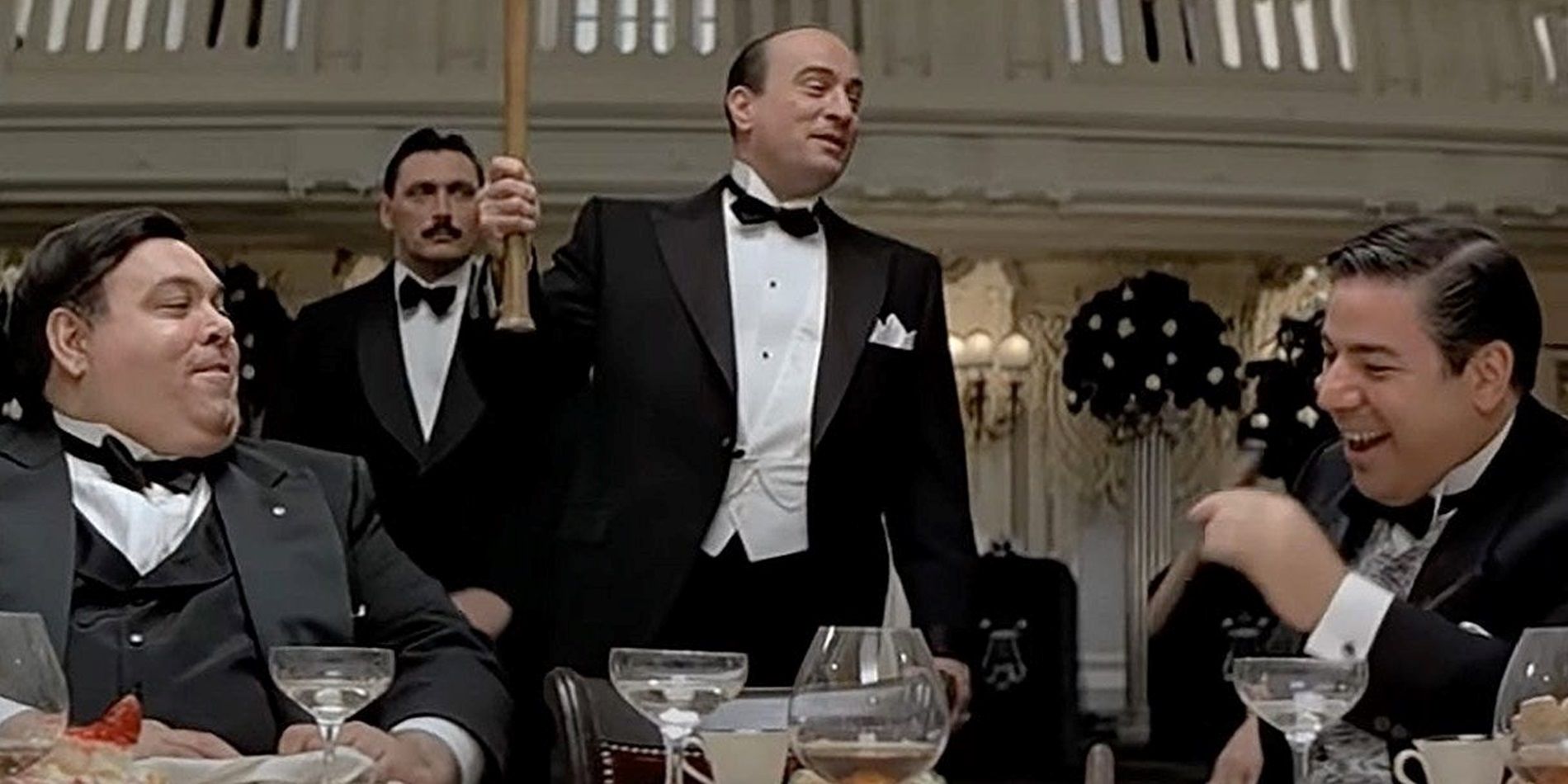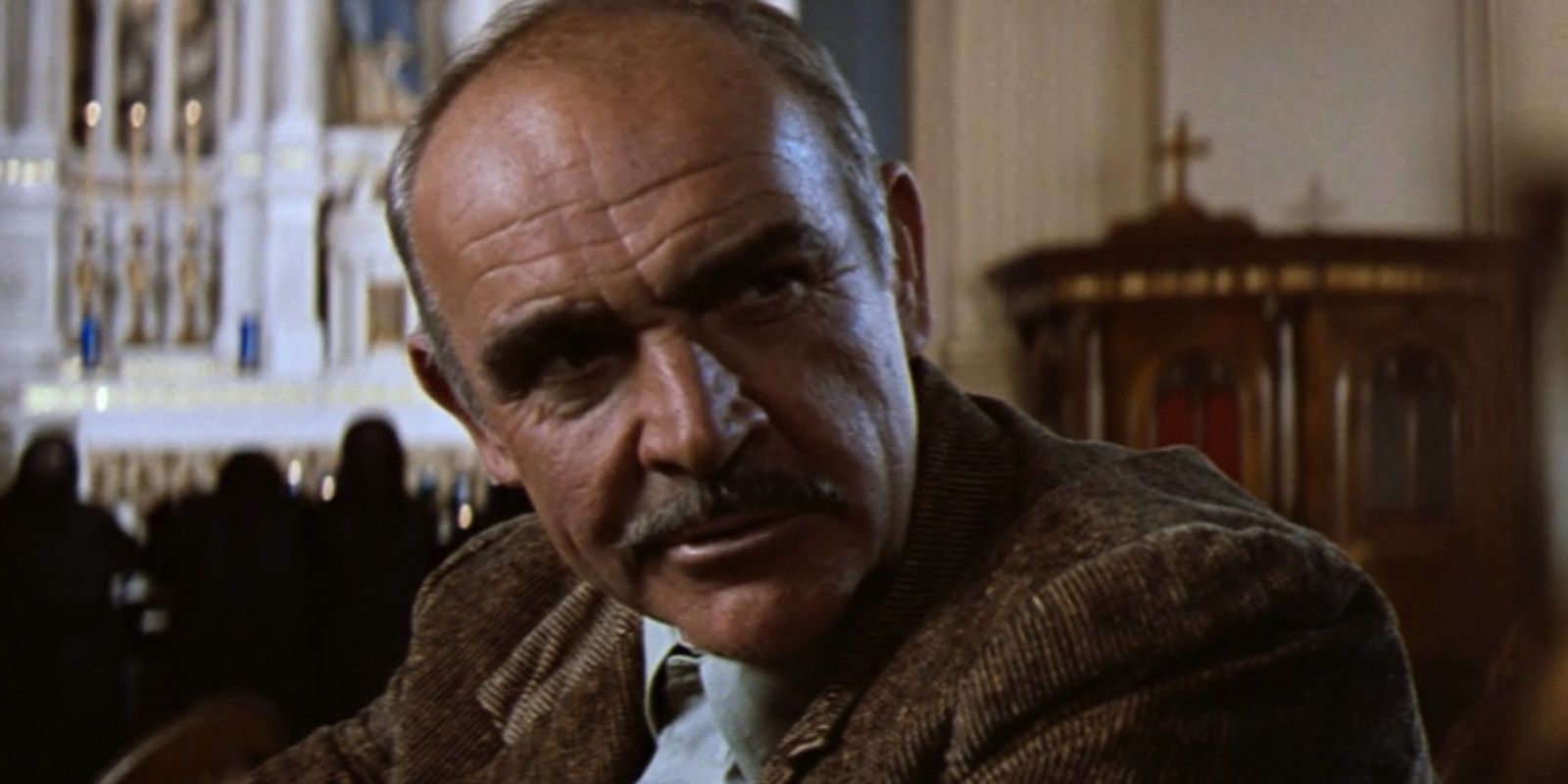Sean Connery made his best movie outside the James Bond franchise when he paired up with Kevin Costner to take down Al Capone in Brian De Palma’s Prohibition-era gangster thriller The Untouchables. Connery became the first actor to play Bond on the big screen when he starred in 1962’s Dr. No. The character was already a literary icon, but Connery was responsible for making Ian Fleming’s gentleman spy a beloved staple of the silver screen. He played 007 in five more official Eon productions and one unofficial non-Eon production, 1983’s Never Say Never Again.
While Bond is undoubtedly Connery’s most iconic role, he had a very prolific career outside the Bond franchise, too. He worked in a wide range of genres under the direction of such renowned filmmakers as Alfred Hitchcock, Steven Spielberg, John Huston, and Sidney Lumet. From an Agatha Christie murder mystery to a submarine thriller from the director of Die Hard, Connery appeared in plenty of great movies that had nothing to do with 007. But one of his non-Bond movies stands out above the rest – and even earned Connery an Oscar.
Sean Connery United With Kevin Costner For The Untouchables – What It’s About
The Untouchables Chronicles Eliot Ness’ Quest To Bring Al Capone To Justice
Released in 1987, The Untouchables chronicles Prohibition agent Eliot Ness’ efforts to bring crime kingpin Al Capone to justice in Chicago in the 1930s. Kevin Costner plays Ness, Robert De Niro plays Capone, and Connery plays veteran Irish American officer Jim Malone, who teams up with Ness to tackle Capone’s gang and the corrupt cops who help them thrive. The film was loosely based on Ness’ 1957 memoir of the same name (co-authored by Oscar Fraley), which was previously adapted into a TV series that ran from 1959 to 1963.
|
Budget |
$25 Million |
|
Worldwide Box Office |
$106.2 Million |
|
RT Critics’ Score |
83% |
|
RT Audience Score |
89% |
The Untouchables was directed by Carrie’s Brian De Palma from a script by Glengarry Glen Ross playwright David Mamet. The cinematography was done by Stephen H. Burum, who had previously shot De Palma’s erotic thriller Body Double, and it was edited by regular De Palma collaborators Gerald B. Greenberg and Bill Pankow. The Grammy-winning musical score was composed by The Good, the Bad, and the Ugly’s Ennio Morricone, and features period music by Duke Ellington. The Untouchables was a critical and commercial success on its initial release and earned four Academy Award nominations.
The Untouchables’ True Story Is Mostly Fictionalized
It’s Based On A True Story, But It Takes Plenty Of Artistic Liberties
Although Ness’ crusade against Capone is a true story, and the film was based on Ness’ own account of the case, The Untouchables’ dramatization of the investigation is largely fictionalized. Ness didn’t kill Frank Nitti, as depicted in the film; Nitti died by suicide in 1943, 12 years after Capone’s trial, a day before he was due to appear in court himself. The iconic scene in which Capone beats a lieutenant to death with a baseball bat to caution others against betraying him wasn’t based on a true event, but rather an urban legend.
Although it shares its title and source material with the TV series of the same name,
The Untouchables
has no connection to the TV show.
The shootouts at the courthouse and the railway station are stylish action scenes, but they never happened, and neither did the raid at the Canada-United States border. In the movie, Ness’ wife is named Catherine, and they have a daughter, but in real life, Ness’ wife was called Edna, and they had no children at the time. The film also overplays Ness’ role in Capone’s final tax evasion conviction; that was actually spearheaded by IRS Agent Frank J. Wilson and U.S. Attorney George E.Q. Johnson. The Untouchables is a great gangster story, but it’s far from historically accurate.
Why The Untouchables Is Sean Connery’s Best Movie Outside Of James Bond
The Untouchables Has Slick Action Sequences & Great Performances
Despite its historical inaccuracies, The Untouchables has slick style, captivating action sequences, and an operatic score. But what makes it Connery’s greatest non-Bond movie is his greatest non-Bond performance. Connery’s turn as Malone earned him the Academy Award for Best Supporting Actor, making him the first Scottish actor to receive the honor. He also won a Golden Globe in the same category. Connery’s Irish accent is a little shaky, but his portrayal of a grizzled lawman who’s grown disillusioned with corruption is really powerful and moving. Connery’s world-weary cynicism is an interesting counterpoint to Costner’s bright-eyed optimism.
Sean Connery’s Other Best Movies Outside Of James Bond
Connery Starred In Plenty Of Great Non-007 Movies
The Untouchables wasn’t the only classic movie that Connery made outside the Bond franchise. He also appeared in The Man Who Would Be King in 1975, A Bridge Too Far in 1977, and Time Bandits in 1981. In 1986, he starred in the fantasy actioner Highlander, which was a critical and commercial flop on its release, but has since been reappraised as a cult classic. Connery’s final on-screen role before his retirement was as Allan Quatermain in 2003’s The League of Extraordinary Gentlemen, essentially a public-domain Avengers movie. But these are his very best non-Bond movies:
- Marnie (1964)
- Murder on the Orient Express (1974)
- Indiana Jones and the Last Crusade (1989)
- The Hunt for Red October (1990)
- The Rock (1996)
In 1964, at the height of his Bond tenure, Connery starred alongside Tippi Hedren in Hitchcock’s psychological thriller Marnie. Connery and Hedren’s intoxicating on-screen dynamic carries what is now remembered as one of Hitchcock’s darkest films. In 1974, Connery appeared in the star-studded ensemble of Lumet’s spot-on movie adaptation of Murder on the Orient Express. Connery plays one of the many suspects investigated by Albert Finney’s Hercule Poirot in this pitch-perfect translation of Christie’s classic whodunit.
In 1989, Connery starred alongside Harrison Ford as Indy’s estranged father in Indiana Jones and the Last Crusade. Ford and Connery’s father-son dynamic is both hilarious and heartwarming, making Last Crusade arguably the most emotionally engaging Indiana Jones film. Indy was conceived as an American Bond, so it was fun to see Bond himself as Indy’s long-lost dad. In 1990, Connery returned to the spy genre to play the commanding officer of the titular submarine in John McTiernan’s The Hunt for Red October, a tense Cold War thriller set at sea.
Connery gave his last truly iconic performance in Michael Bay’s action thriller The Rock in 1996. Connery plays former SAS captain John Mason, who teams up with Nicolas Cage’s FBI chemist Stanley Goodspeed to take on a rogue band of Navy SEALs who have occupied Alcatraz Island. Mason is so similar to 007 that there’s even a fan theory that Mason is really an older version of Bond. The Rock proved that Sean Connery still had his 007 charisma more than three decades after retiring from the role.


